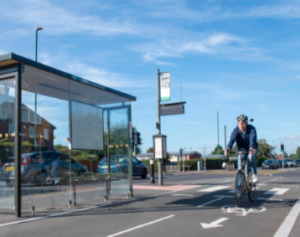The Connected Places Catapult is working with the Department for Transport to develop the Manual for Smart Streets, a guidance document that can be used in England to inform the approach to delivering cooperative traffic management services.
The DfT says it has aspirations to put the UK back at the forefront of innovation in the sector and, empowered by the Build Back agenda, it wants to provide Authorities with the knowledge and resource to make informed decisions over the infrastructure, information and tools utilised by road users on their network.
It explains UK drivers travel more than 300 billion road miles on the UK highway network every year, an increase of 50 per cent since the 1980s. In this time there’s been revolutionary changes to how we capture and manage data. Mobile communications have become ubiquitous. Technologies like machine vision and the internet of things create a much richer picture of the world. Open data linked to mobile communications has facilitated multiple journey planning and management applications. Just as these technologies have changed how we use our time and how we travel, they will change how we manage the streets.
But despite these technological advances, the DfT and Connected Places Catapult say much of the roadside infrastructure and software to manage highway networks and information streams to road users has not significantly changed in the past three decades. For example, Split Cycle and Offset Optimisation Technique (SCOOT) was first installed in 1980 and still forms the cornerstone to many traffic signal operations to date. This approach has led to limited innovation in the Intelligent Transport System sector with improvements typically incremental in nature.
Henry Tse, Director of New Mobility Technologies at Connected Places Catapult said, “We are delighted to be working on this with the DfT to improve how Local Authorities look after their traffic management services.”
The approach seeks to deliver products from the users’ point of view. As such the organisations say they will initially be conducting primary and secondary user research to clearly understand the users’ needs and current pain points, and will be engaging with local government, the cooperative ITS market, SMEs, and academia.
“Using our findings, we will be creating a clear set of impactful guidance, to encourage wider adoption and standardisation of services that take advantages of new technology,” a statement reads. “This could ultimately deliver a smoother and more connected journey for everyone using England’s highway network.”
The Connected Places Catapult says any organisations wishing to take part in the research should contact [email protected].
(Picture – Connected Places Catapult)






















